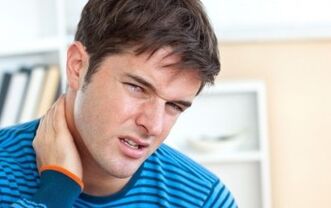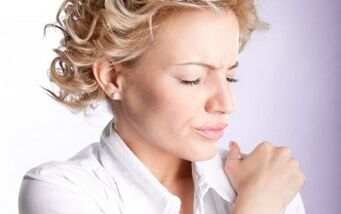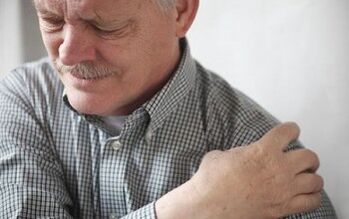
A sedentary lifestyle, office work, lack of sufficient physical activity and the peculiarities of modern nutrition lead to the spread of a large number of diseases inherent in our urbanized society.
The leadership among them is deservedly occupied by cervical osteochondrosis.
And all because the weak muscle corset and the fact that these 7 discs have more mobility than any other part of the spine receive constant physical activity in the form of the need to constantly hold the head in the position, thedesired tilt and rotation.
Causes of disease
Previously, osteochondrosis was considered a disease of adulthood, and people who lived for more than 40 years suffered from it. But every year the age threshold for the disease drops and it "gets younger", which leads to a predisposition to the disease of young people aged 18-20.
The main reasons for the appearance of such pathologies:
Violation of posture in adolescence.Young people no longer want to monitor their posture, which leads to its violation.
Overweight.The appearance of excess weight increases the load on the spine.
Curvature of the back.The risk of osteochondrosis with curvature of the back increases.
Back injury.A back injury causes irreparable damage to any part of the spine.
Metabolic disease.In case of metabolic disorders, there is also a high probability of developing osteochondrosis.
Hard physical labor.Too much physical work also leaves indelible marks on the health of the spine in general and on the cervical region in particular.
Low level of physical fitness.The fitness level also affects the state of the spine, and the lower it is, the weaker the spine.
Errors when performing complex exercises.Athletes can have problems with osteochondrosis during training with gross errors in the work.
Stress.Modern man's nervous tension and constant stress also cause disorders of the cervical vertebrae.
Sedentary lifestyle.A sedentary lifestyle or inactivity greatly affects the vertebrae.
Past illnesses.Osteochondrosis can develop after infections and hypothermia.
The disease is, in fact, the result of muscle spasm, which does not allow the cervical vertebrae to move easily, worsening the blood supply to the tissues, while the posture is disturbed, as a result of which dystrophic processesin the vertebrae themselves, as well as in the intervertebral discs, begin to activate, causing narrowing of the intervertebral holes and pinching of the nerve roots.

Main symptoms
Symptoms of cervical osteochondrosis are somewhat different from other parts of the spine.
A tighter fit of the vertebrae leads to the fact that even the slightest change in one of them squeezes or displaces any nerves or vessels, and also squeezes the spinal cord.
It is because of this that a violation of body functions can be registered: a disorder of skin sensitivity, dizziness.
Clinical manifestations:
- Pain in the neck and shoulders, which also extends to the back of the head, ear and eye area, and does not subside even at night.
- Pain in the upper limbs, which increases with exertion.
- Decreased sensitivity of the upper limbs, muscle weakness, movements become difficult.
- In the morning, the muscles of the neck are tense, and the head tenses, it seems that the neck has "rested".
- Turning or tilting the head, pain sensations in the neck.
- From time to time, the limbs go numb, there is a burning or tingling sensation.
- An unpleasant shooting pain periodically appears in the neck and nape of the neck.
- Violent head movements cause blurred vision, dizziness, or may cause fainting.
- The appearance of tinnitus.
- Decreased visual acuity and hearing.
- There is numbness of the tongue.
- There are heart pains that do not respond to trinitroglycerin, but their intensity changes due to a change in body position.
- The headache occurs in the occiput, crown and temples.
- In the region of the cervical region, the so-called "tourniquets" appear, that is, connective tissues develop.
Signs of cervical osteochondrosis
Cervicalgia (pain and muscle tension in the neck)

Cervicalgia is a pain syndrome in which pain and tension in the muscles of the neck are characteristic, the cervical region loses mobility, dizziness may occur, clarity of vision is impaired, autonomic dysfunction may appear.
The pain can be tingling, throbbing, and can also "show through".
It is worth making the slightest movement, sneezing or coughing - as soon as muscle tension is given by pain.
There are also problems with turning the head or tilting it to the side, when the patient has to do this with the whole body.
In addition, patients experience dizziness, occipital pain, tinnitus, numbness in the back of the head and hands.
The reasons for its occurrence may be:
- Hypothermia.
- Uncomfortable position of the head during sleep.
- Sedentary work, which requires keeping the head in an uncomfortable position for a long time.
- Physical activity resulting in muscle tension in the neck area, including sports training in the gym.
- Cervical spine injuries.
- Tissue infections or tumors.
Pain in the back of the head, shoulders and arms, as well as pain when turning the head, indicate the presence of the initial stage of a chronic disease, such as osteochondrosis.
Cervicocranialgia or posterior cervical symptom (pain in the cervico-occipital region)

Cervico-cranialgia is pain in the cervico-occipital region, the occurrence of which is closely associated with a lesion of the cervical spine, a degenerative lesion or its inflammation.
Its distribution often reaches the frontotemporal lobe, the shoulder and the arm, and can also be unilateral. In this case, the parts do not change.
The intensity of this pain is moderate, its intensification is observed with movements of the head, palpation of the cervico-occipital muscles, as well as with a prolonged stay in an uncomfortable position for the head.
Usually, the causes of such pain can be either osteoarthritis or osteochondrosis of the cervical spine.
In these cases, the pain may be pressing, pulling, or throbbing. Slight movements of the head, coughing, muscle tension can cause bouts of exacerbation of pain.
The main grievances complained of by patients:
- Inability to turn and tilt the head, for which it is necessary to move the whole body.
- Numbness in the occipital region and hands.
- Noise in the ears.
- Dizziness.
- Pain in the occipital region, etc.
Cervicobrachialgia or shoulder-shoulder syndrome (brachiaglia)

Cervicobrachialgia is detected by numbness of the hands, accompanied by deep and often shooting pains in the hands or in the forearms, as well as a feeling of weakness in the upper limbs.
This usually happens at night.
The disease can develop reflexively, for the most part, those who are engaged in heavy physical labor, and 9 out of 10 are women, are affected by the disease.
In this case, vegetative-vascular, musculo-tonic and neurodystrophic manifestations can be observed.
For reflex syndromes, a very characteristic feature is the presence of musculo-tonic reactions, such as muscle spasms.
Processing

The treatment must be complete.
At the same time, it is necessary to apply the principles of drug and non-drug treatment, not forgetting about the prevention of possible diseases.
By drug treatment, we mean the use of drugs that relieve pain and inflammation, as well as drugs that improve cerebral circulation.
If there is a pathology in the form of muscle tension, it is recommended to take relaxing drugs and vitamin-mineral complexes in therapeutic doses.
An important role in the treatment is given to the methods of physiotherapy:
- water procedures.
- Paraffin applications.
- Electrophoresis.
- Magnetotherapy.
The widespread use of alternative therapies also helps to combat this disease. But, despite everything, therapeutic exercises remain the most effective means of treatment.
Prevention
In order for all the problems with osteochondrosis to bypass you, you need to remember all the reasons that lead to the onset of the disease.
Since the main reason is a sedentary lifestyle, do not forget about morning exercises and a walk, and be sure to include exercises with the muscles of the neck in your daily gymnastics. And do not forget that circular movements of the head can lead to neck injuries, so you should not include them in the exercises.
And also do not forget that a preventive examination of children of school age by an orthopedist is mandatory.
Form a strong muscular corset, be athletic.
Eat those foods which can replenish the body with minerals such as calcium and magnesium, vitamins.



















